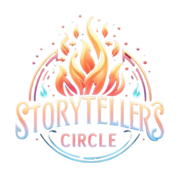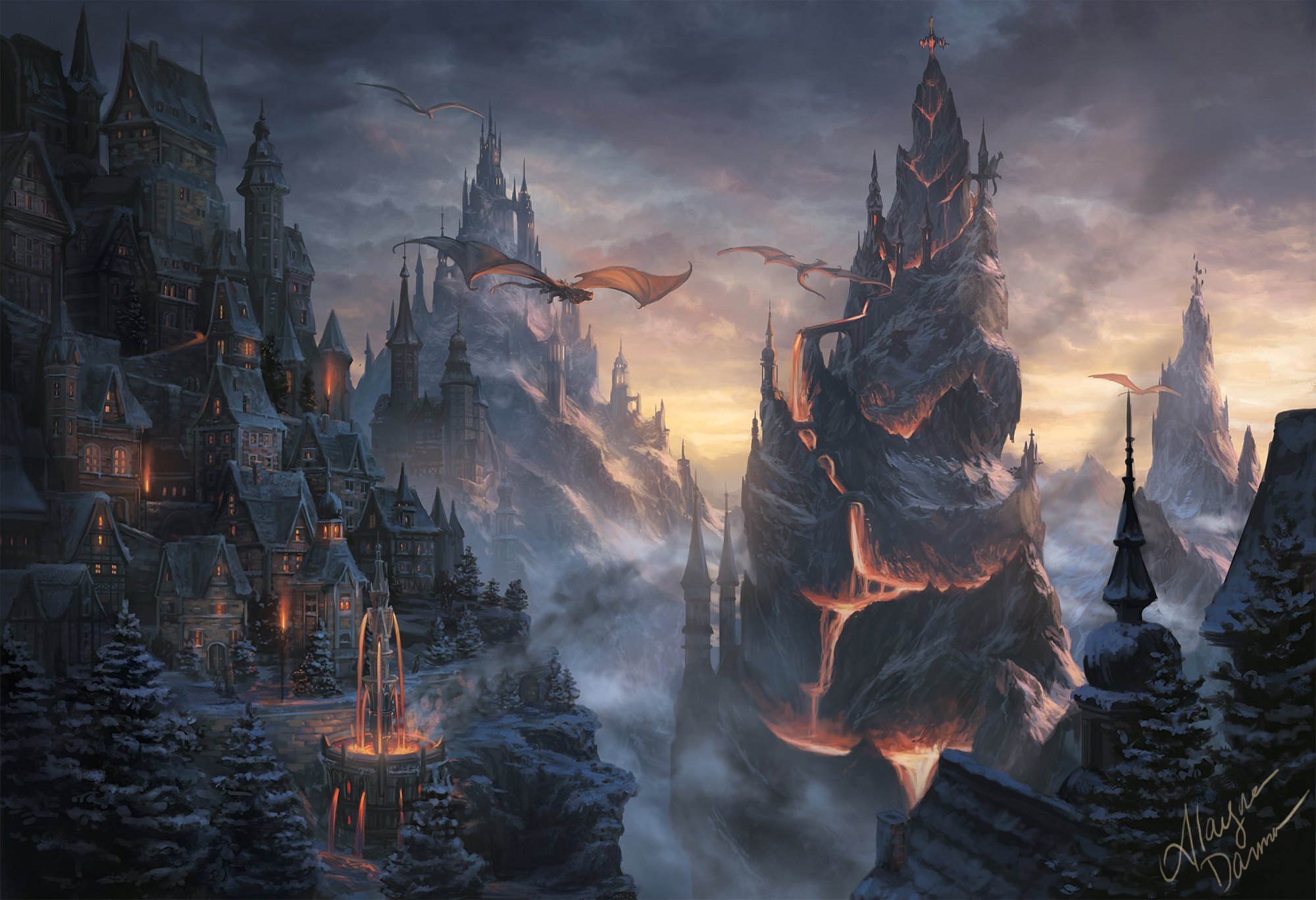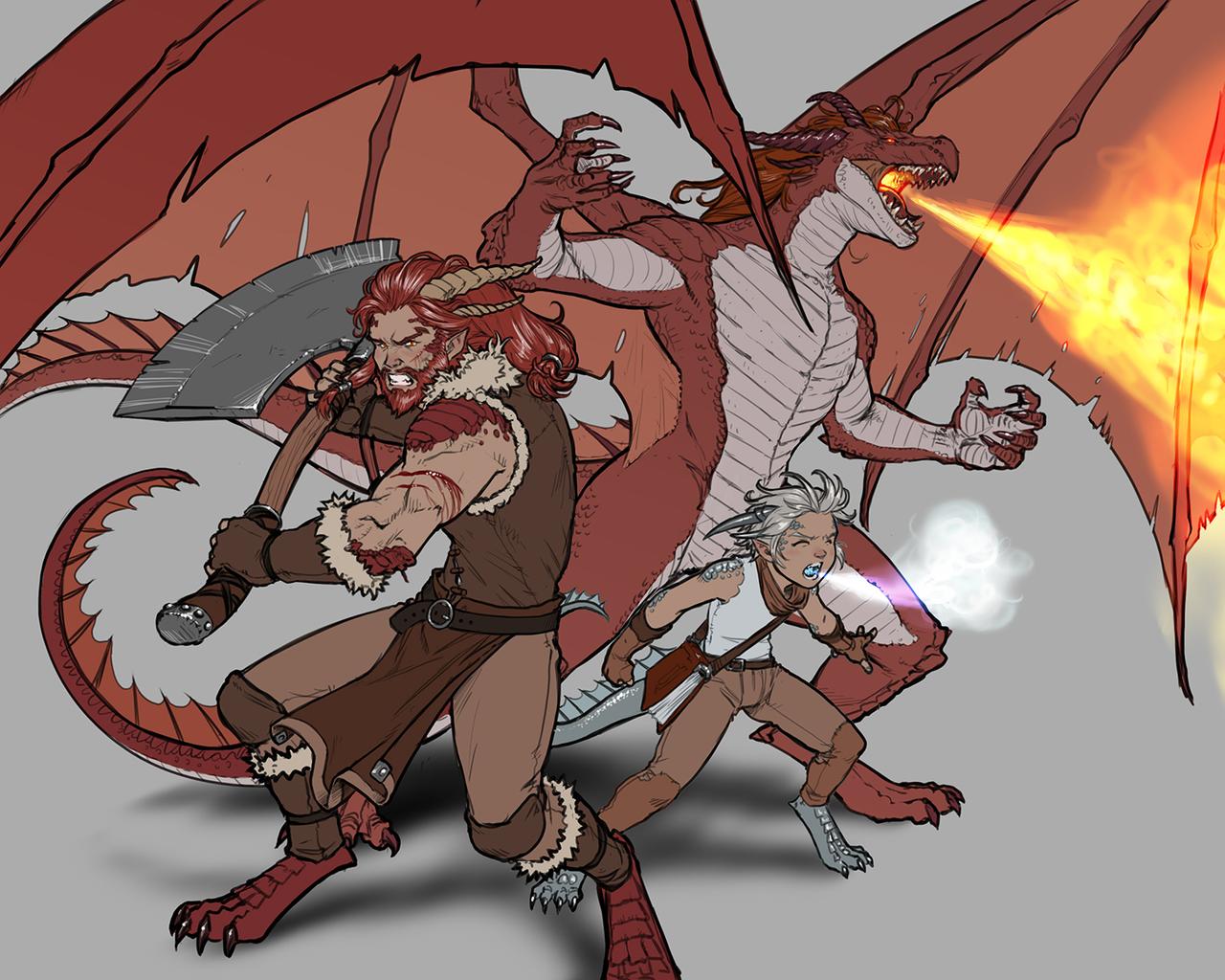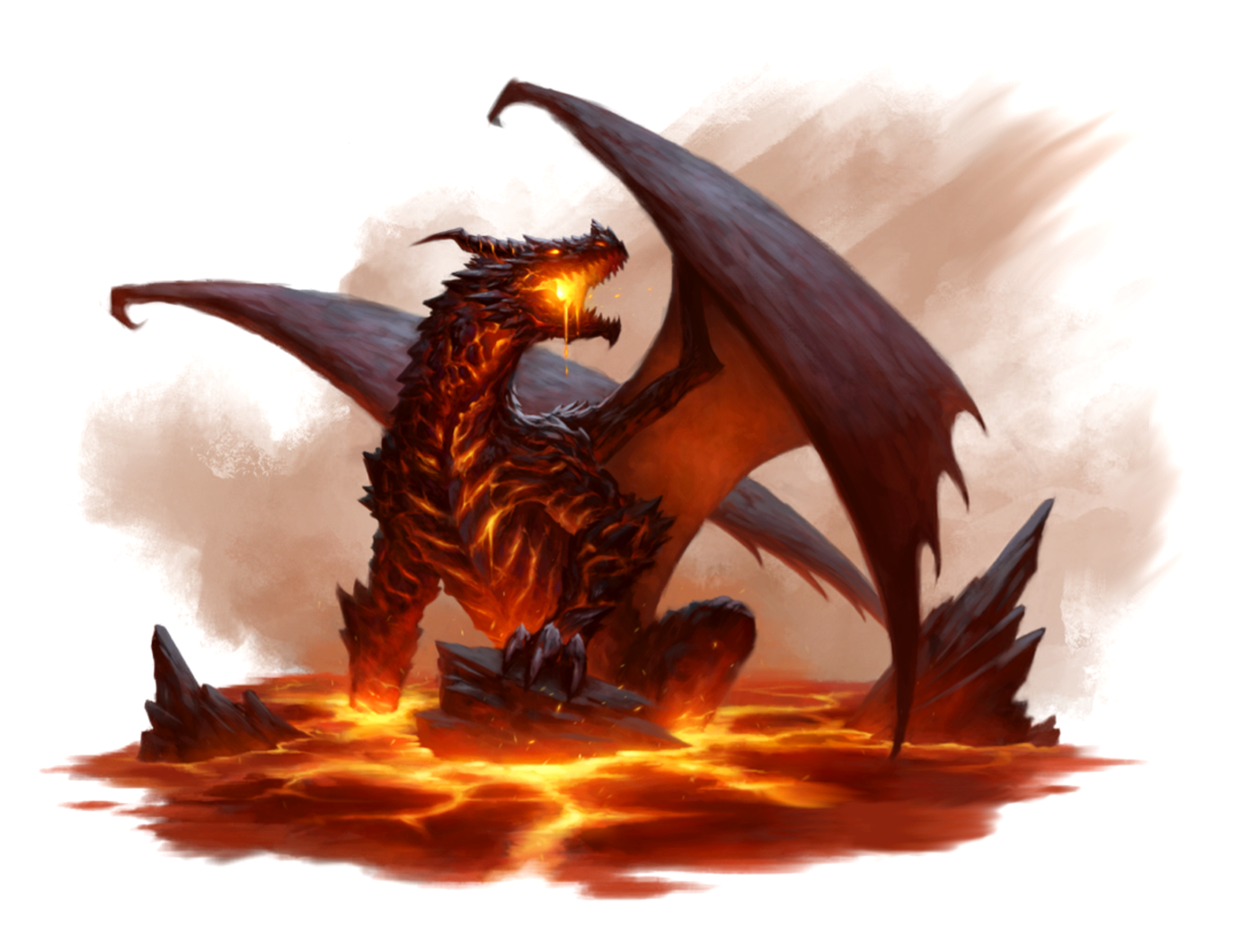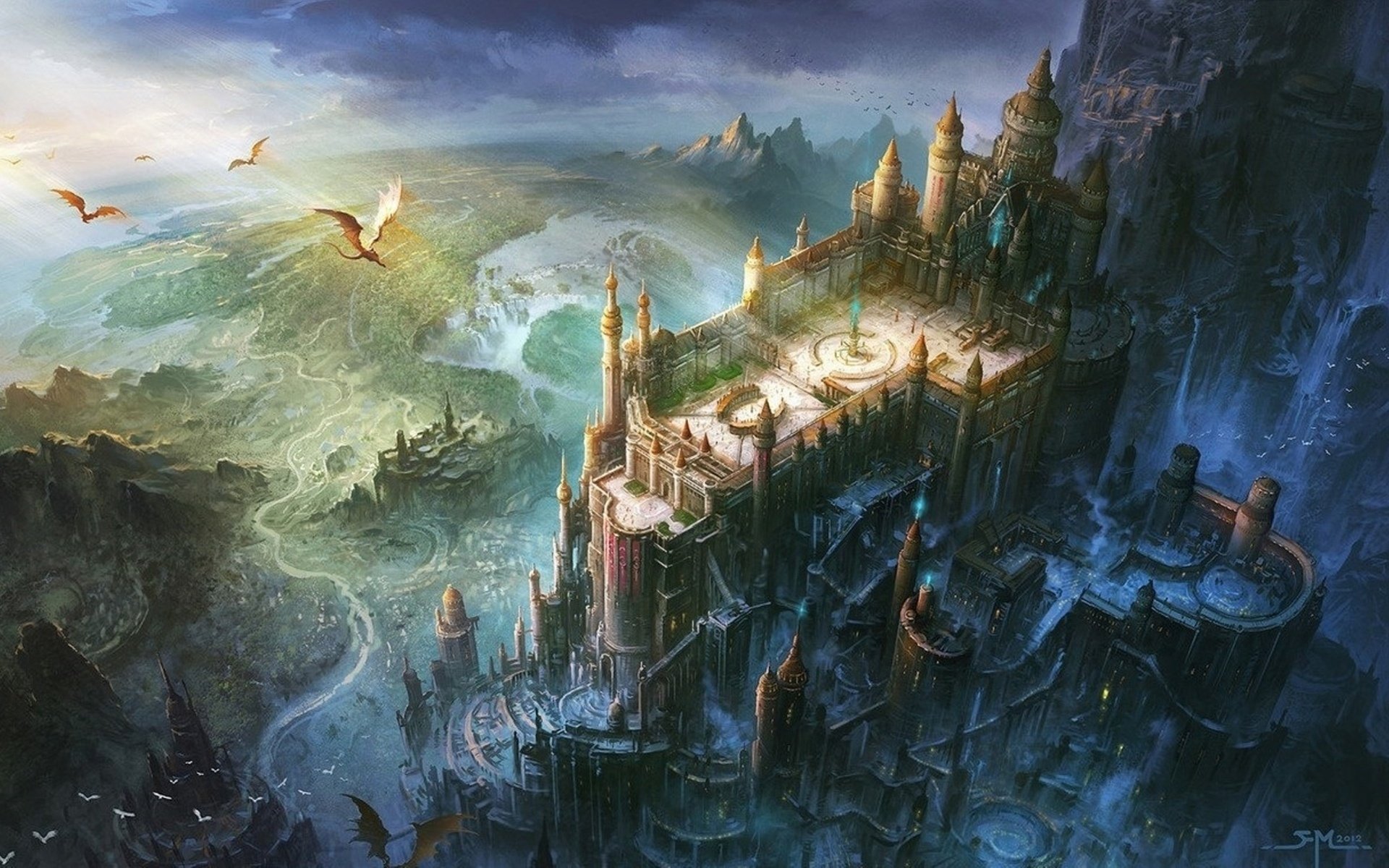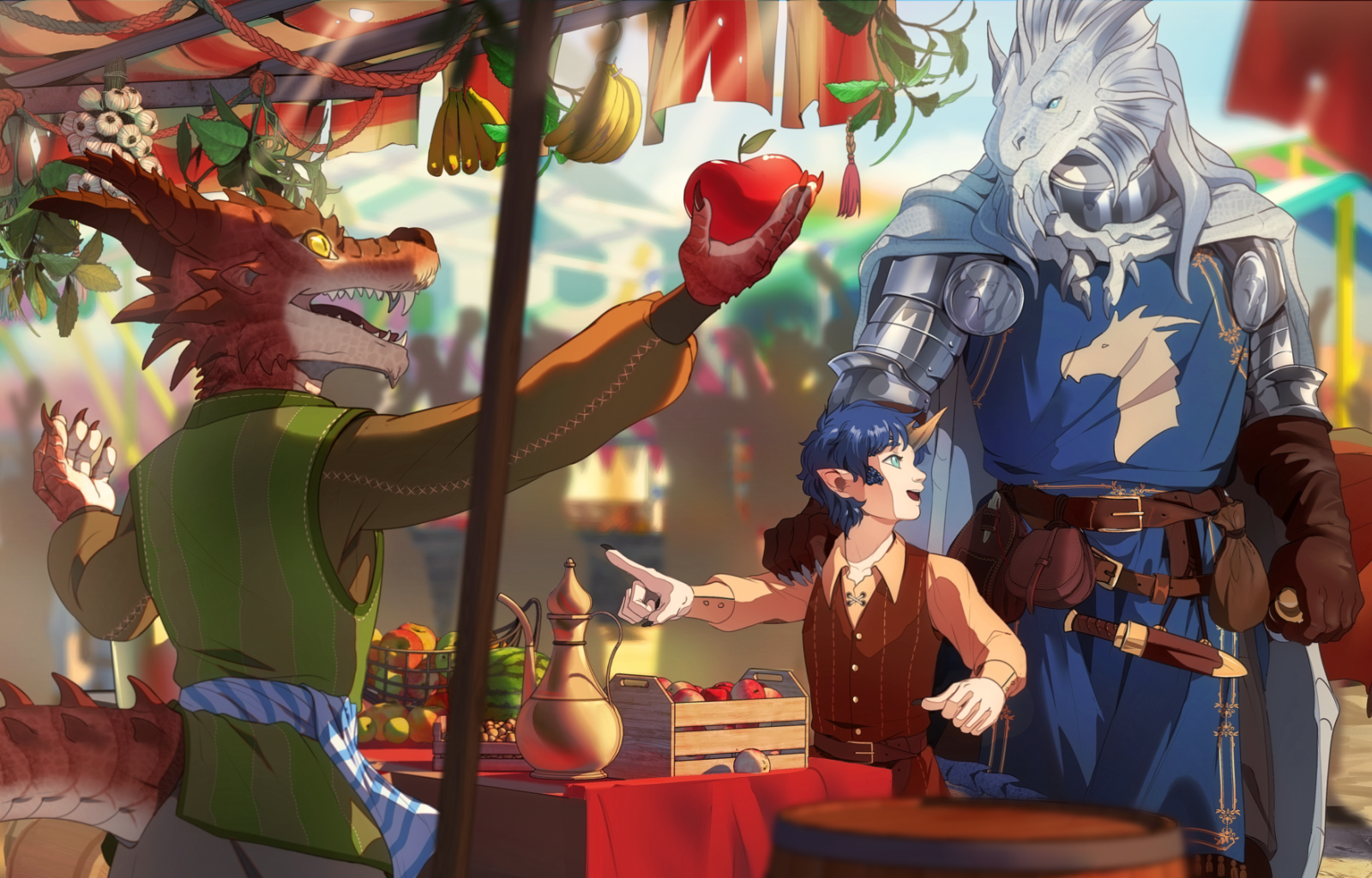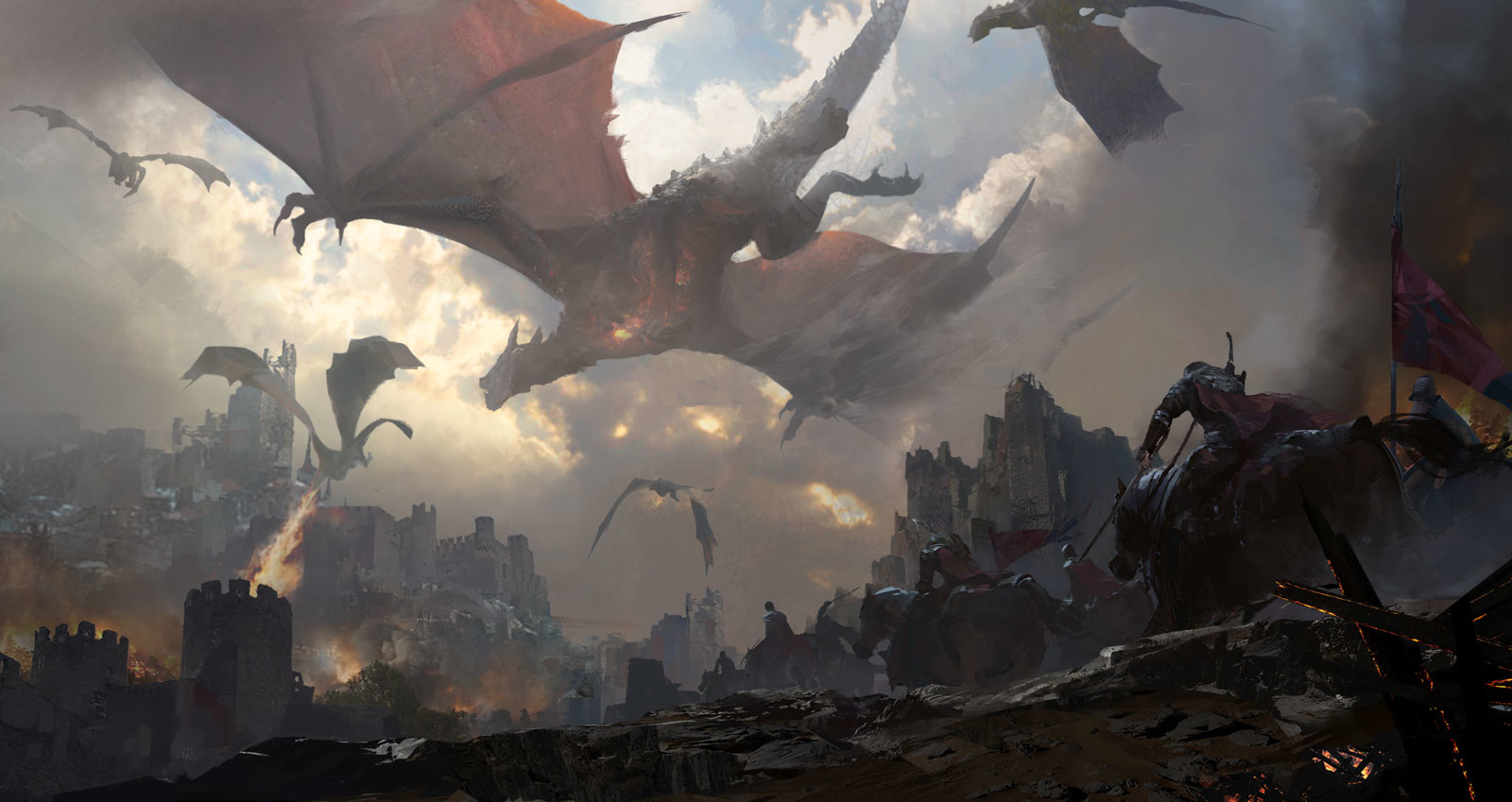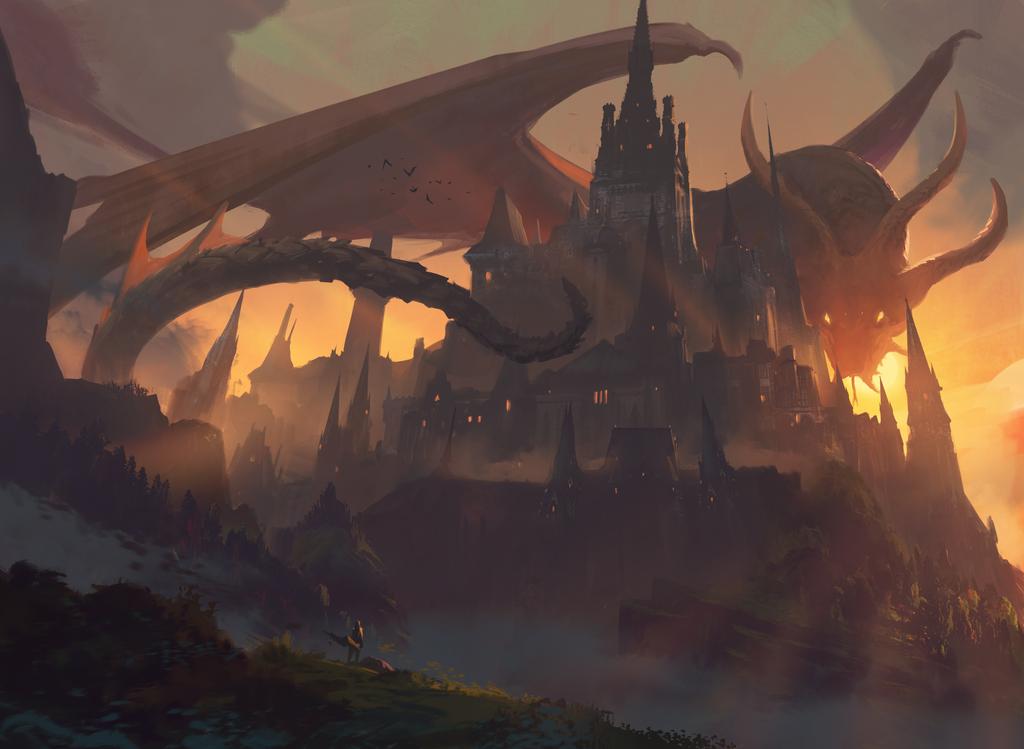Breq'Anya
The Breq'Anya plains are a region of savannah brush and grassland in the Eastlands of Terra, situated at the feet of the mountain ranges of the Northlands. The warm, wet winds blowing in from the east and south hit the northern mountains and are pushed upwards to a great altitude, resulting in a cycle of arid and rainy seasons that can be predicted almost to the day.
This microclimate is the defining feature of life on the plains, with most creatures and people adopting a migratory lifestyle in pursuit of the grasses nourished by the most recent rainfall- or else preying upon the vast herds of animals that graze there.
The dark skinned Breq'Anya people, for whom the plains are named, are no exception. They live as hunter-gatherers in constant migration, dispersed across the savannah in small clans and family units, and only gather into the greater tribes that make up their political society at times of religious festival or great need. They build no permanent settlements, and have long forgotten the name- if indeed they ever knew it- of the ancient city that now lays in ruins between the three great lakes at the heart of the plains.
The Breq'Anya people have lived in relative isolation for a long time, owing to the comparative sparsity of their population relative to the rest of the Eastlands, and a landscape that outsiders find hostile and difficult to navigate due to its lack of landmarks and population centres. Resources have always been plentiful, and so conflict between the tribes has been infrequent and usually peacefully resolved. However, the upheavals in the Midlands in recent generations have led to disturbances in the climate and incursions from previously unseen and fearsome creatures of magical origin. The increasing competition for resources that has resulted has caused a corresponding rise in skirmishes between clans.
Additionally, the Breq'Anya plains now sit in the unfortunate position of Buffer State between the centaur tribes and free peoples of the northeast, and the ascendant Varnathian Empire to the south. Until now, Varnathus has limited their involvement to strategic diplomacy and a divide-and-conquer approach with the tribes, but emperor Novos' hunger for conquest will surely not be restrained for long.
Races/Species Demographics
Human: 99%
Non-human: <1%
The population of the Breq'Anya plains is small, and almost entirely human. The human population is itself almost entirely made up of Breq'Anya tribespeople. There are no laws against or antipathy towards immigration; anyone who is willing to live as the Breq'Anya do is accepted. However, due to the close knit extended family nature of day to day life, admittance into a clan group (and thus membership of one of the Great Tribes) is hard to come by, and it would probably take at least a generation or two before one's descendants were truly considered Breq'Anya.
Terran is a universally spoken language, as is the native Breq'Anya language; Ushanya- which is itself a highly divergent dialect of Terran.
Government
The Breq'Anya believe that they are descended from stars which fled to the earth to escape a great cosmic war. As such, they are divided into seven Great Tribes, six of which are said to have been founded by these astral refugees and their retinues:
Breq'Khepshef: "The people of the constellation of the Sword"; descended of the star Fayanya
Breq'Haras: "The people of the constellation of the Loom"; descended of the star Lya
Breq'Aman: "The people of the constellation of the Twins"; descended of the stars Kaladar and Kalanya
Breq'Eya: "The people of the constellation of the Horn"; descended of the star Galara
Breq'Usheb: "The people of the constellation of the Basin"; descended of the star Aryton
Breq'Kesh: "The people of the constellation of the Bow"; descended of the star Geradon
Each Great Tribe is headed by a matriarch called the Neferanya; "Star-Mother". The Neferanya has total authority over her tribe, and it is unheard of for a Breq'Anya to act against the wishes of their Star-Mother.
The first act of a Neferanya on ascending to her role is to appoint her Tomorrow-Keeper from the women of the tribe. This is the woman who will be her successor, who begins her career as an apprentice and aide to the Neferanya. The Neferanya also appoints four other keepers from the men of the tribe.
The Fire Keeper is responsible for leading religious ceremonies and keeping the oral history of the tribe. The Water Keeper is responsible for keeping the sacred Usheb basin used for communication between the disparate tribes, and for inter-tribal diplomacy. The Earth Keeper is responsible for matters of warfare, hunting, navigation and tracking of prey. The Wind Keeper is responsible for the day to day governance of the tribe and coordination of the disparate clans within it, and with being ambassadors to the Seventh Great Tribe.
Outside of these roles, authority is greatly decentralised among the elders of the many family and clan groups of the Breq'Anya.
Once every seven years, for one month, the moon enters The Constellation of the Dragon. Children born under this sign are given over to the seventh Great Tribe: the
Breq'Vadranya; "The people of the constellation of the Dragon". This tribe are the only sedentary people of the plains. They are tasked with guarding the ruined city at the centre of the plains, which the Breq'Anya superstitiously believe to be cursed and haunted, and are supplied with food and resources by the Wind Keepers of the other six tribes. This obligation is as close as the Breq'Anya come to taxation. The Breq'Vadranya are the smallest of the tribes, numbering less than two thousand individuals. Their service is considered a lifetime vigil, and as such they do not marry or sire children.
Once every year, during the month before the rainy season, all of the Breq'Anya gather in a vast tent city outside the ruins at the centre of the plains. This month is a time for great festivity and cultural exchange, during which the Breq'Anya pray for the coming of the rains, and the Neferanyas convene in the Council of the Stars- the Seshperanya. The Breq'Vadranya are considered the hosts of this council, during which all matters of national importance to the Breq'Anya as a people are decided by vote of the Star-Mothers. As the Seventh and smallest Tribe, the Neferanya of the Breq'Vadranya votes last and is considered the deciding vote if the other Neferanyas are evenly divided in opinion.
It is also at this important festival that the bulk of trade and social interaction between tribes occurs, including the induction of children into the Breq'Vadranya, and the many inter-tribal marriages that keep the Breq'Anya people united- the new husband joins his partner's clan group and their children become members of her Tribe.
Technology, Military and Culture
Due to their nomadic way of life, the Breq'Anya do not mine metal or mineral ore. As a result, their technology is largely limited to what can be obtained from plant and animal sources. Metal items such as weapons and jewellery are highly prized prestige items, and are often clan or family heirlooms. On certain parts of the plains, near the foothills of the northern mountains, obsidian is available and is used for jewellery and edged weapons.
The Breq'Anya are persistence hunters; chasing their prey into exhaustion and finishing it off with bows and spears. They also gather wild growing grains and vegetables to supplement their diet. Hunting or gathering these food sources is the responsibility of every clan member, and occupies the overwhelming majority of their time. As a result, the Breq'Anya exhibit a level of stamina and resilience that is often shockingly impressive to outsiders. They are also highly accomplished trackers and able to move about the plains and disguise their tracks with great stealth- it is often said that only a Breq'Anya can track another Breq'Anya.
As a result of their isolation, the Breq'Anya have no formal military- indeed, until now they have been at greater risk from the many large predatory animals of the plains than from any organised invading army. At need, the Earth Keeper of each tribe can call upon every tribesman and woman as a levy army, armed with the same weapons they use for hunting. The Breq'Anya have very little experience of warfare on a grand scale, and rely primarily on hit-and-run ambushes and the elemental magic of individual magi, along with their extreme mobility, stealth and familiarity with their environment to outmanoeuvre and overwhelm their enemies. They fight in small mixed-unit squadrons organised along clan lines.
The Breq'Anya have no written tradition, but have a highly developed oral tradition of history, legend, poetry and song. An abundance of dyes derived from plant and animal products has resulted in an extremely rich textile culture as well; from brightly coloured tents and clothing indicating clan ties, to tattooing and cosmetics, as well as intricate and exquisite tapestries depicting religious and mythological events, or more mundane scenes from daily life. Intricately carved animal bones and horn are also common, and together these luxury goods constitute the bulk of trade between tribes, as well as the extremely limited trade for crafted metal objects with societies outside of the plains.
Religion and Magic
To the Breq'Anya, religion and magic are deeply intertwined. Their religious practices revolve around veneration of the stars and intense ancestor worship. They believe that the destiny of the Breq'Anya people is to one day return to the stars in triumph to reclaim their homeland, and they believe that upon death they also return to the stars. As such, the dead are cremated on precarious, elevated pyres to facilitate this process. Perhaps as a result of this practice, fire itself is seen as a threshold between worlds and is held sacred.
Most Breq'Anya can name their ancestors in a maternal line all the way back to the genesis of their tribe, and a customary Breq'Anya greeting is to give one's name, with the name of one's antecedents back to the eldest living maternal relative.
Magic is seen as a force of the natural world. It can be practiced by anyone with the aptitude, but is highly ritualised- these rituals take a lifetime to master, and as a result the elders of a clan and especially the Keepers of each tribe tend to be the most proficient magic users among the Breq'Anya. It tends to be focused on herbalism, elemental magic, healing magic, and divination. The Breq'Anya are also accomplished with illusion magic, which together with their ability to move great distances en masse and in silence, has contributed to the fame of their ability to disappear into the savannah.
Through the use of hallucinogenic plants, the Fire Keepers are said to be able to communicate with the souls of the departed to obtain knowledge of the past, of distant goings on in the present, and prophetic glimpses of the future.
The Usheb basins carried by the Water Keepers, when filled with water, are used to communicate with other basins across vast distances through careful reading of the ripples and reflections in the water- it is unclear whether this magic is an enchantment upon the basin, or a manipulation of the water itself.
The Earth Keepers are renowned shapeshifters and illusionists, and some hold that their proficiency for tracking and vanishing stems from an ability to commune with the soil, plants and animals around them.
Breq'Anya legend abounds with tales of Wind Keepers who at great need, were able to call upon the power of flight, or to conjure rains or violent storms, in order to save their tribe from disaster, and have a long tradition of both magical and medicinal healing.
Class and Gender Divisions
As a result of the highly communal nature of Breq'Anya society, there are very few class or gender restrictions. The Neferanya and the Keepers of a tribe are highly venerated and gender restricted positions, but besides this, as long as a person contributes to the survival of the clan, there are no restrictions on role within society.
Commonly Encountered Laws
The Forbidden City:
Trespass in the ruined city at the centre of the plains, or any form of interference in the duties of the Breq'Vadranya, is a capital crime. Sentence to be enacted on the spot and without trial by the nearest Breq'Vadranya tribesperson.
Weapon Regulations:
There are no restrictions on weapon ownership or carrying, except at the great tent city in the centre of the plains. Indeed, every adult Breq'Anya is expected to maintain and own at least one weapon for hunting purposes. Use of a weapon to assault or intimidate another is considered a crime, but the prosecution or punishment of such a crime depends on the judgement of the relevant clan or family leader.
Psionics/Magic Use:
Psionics are rare. Use of all magic is legal, but highly ritualised and steeped in religion, and improperly religious use of magic can be considered blasphemous and thus illegal. Use of magic to harm another is considered a severe crime, but the prosecution and punishment of such a crime depends on the judgement of the relevant clan or family leader. Use of magic outside of religious ceremonial purposes at the great tent city is a capital crime.
Dietary Restrictions:
There are no legal dietary restrictions (except cannibalism).
Polygamy:
Illegal due to the high cultural importance of ancestral, tribal and family ties. Polyamorous relationships short of marriage and child bearing are tolerated but not given legal or social status.
Homosexuality/Gay Marriage:
Legal. For marital purposes, the dowry paying partner is considered the "husband", and joins their partner's clan.
Slavery:
Illegal under all circumstances.
Citizenship:
Living a nomadic plains lifestyle, and accepted as a member of a clan group and Great Tribe. Contributing to one's tribe's continued subsistence by participating in hunting, gathering and other duties of daily life. Honouring Breq'Anya customs of star and ancestor worship, and participating in related festivals and ceremonies.


